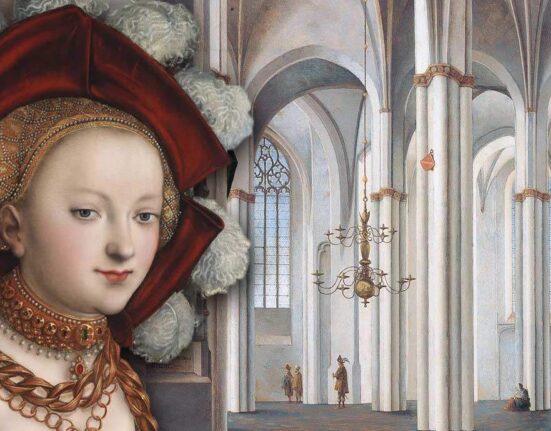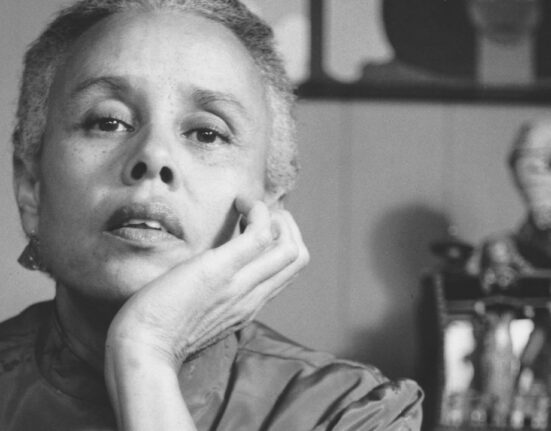The Portland Art Museum (PAM) in Oregon today announced it has named Lloyd DeWitt as its Richard and Janet Geary Curator of European & American Art Pre-1930, a newly created position that will lead the next phase of the European and American art programs (pre-1930) and set the vision for the reinstallation of its permanent collection following the completion of PAM’s campus transformation project in 2025. DeWitt, whose first day at the Museum will be February 5, comes to the Museum from the Chrysler Museum of Art in Norfolk, VA where he is currently the Chief Curator and Irene Leache Curator of European Art.
In this role, DeWitt will be responsible for the care, research, exhibition, and growth of the Museum’s collection of nearly 2,000 paintings, drawings, and sculpture up to 1930 in European and American Art. This will include organizing scholarly exhibitions and related programs, while also spearheading strategic acquisitions to expand the collection in this area. Additionally, he will oversee the presentation of all traveling exhibitions of European and American art pre-1930.
“We are delighted to welcome Lloyd DeWitt to Portland as our new Richard and Janet Geary Curator of European & American Art Pre-1930,” said Brian Ferriso, Director and Chief Curator, PAM. “Lloyd’s deep experience as a curator, as a scholar of European Art, and as a museum administrator, all made him uniquely qualified to steward our collections and partner with me and the curatorial team as we plan for the Museum’s future as an expanded hub for the community to engage and connect through the art.”
“I’m thrilled to be joining the Portland Art Museum in this new expanded role,” said DeWitt. “I believe a curator’s job is to harness the creativity of the whole organization in order to develop impactful exhibitions and programs that will resonate within the Portland community and the broader art world,” said DeWitt.
The Museum is in the midst of a campus transformation project, which includes 95,000 square feet of expanded space and gallery renovations set for completion in 2025. This project will improve accessibility, reorient the visitor experience by greatly enhancing connectivity among the buildings, and set the stage for a comprehensive reinstallation of the permanent collection in the years following completion, including European and American art.
DeWitt has worked in major art museums across North America for more than two decades. Notable highlights from seven years at the Chrysler Museum include organizing exhibitions such as the touring Triumph of Nature (2023), Farm to Table (2024), and Thomas Jefferson, Architect (2019). As Chief Curator he was also instrumental in revising the Chrysler’s collection management policy, streamlining the deaccessioning process, and initiating foundational work on developing a Works on Paper Study Center, which is now under construction. He also worked closely with community partner organizations to bring multiple perspectives to exhibitions and programs, including leading engagement with the local Native American community in Norfolk.
At the Art Gallery of Ontario in Canada, where DeWitt served as Curator of European Art from 2011 to 2016, he organized exhibitions on Michelangelo, J. M. W. Turner, and Wilhelm Hammershøi, while also acquiring two of the most significant works of European art in the history of Canadian museums. DeWitt also previously held curatorial positions at the Philadelphia Museum of Art from 2003 to 2011.
DeWitt is also a visiting adjunct professor at Old Dominion University. He holds a Ph.D. in Art History from the University of Maryland, College Park, an MA in Art History from the University of Massachusetts, Amherst, and a BA in Fine Art from the University of Guelph, Guelph, Canada.
About PAM’s Collections of European and American Art
The European and American art holdings have been pivotal to the Museum’s collection since the Museum’s founding in 1892 when PAM founder Henry Corbett gave funds to purchase the first European art acquisitions. Today the Museum’s European art collection of 320 works occupies over 13,500 square feet in a sequence of galleries on the Main Building’s second floor, allowing visitors to follow the works from the 17th century back to Classical Antiquity or forward to the 19th century. A gallery of classical antiquities displays a selection of Greek, Roman, and Etruscan objects, including red- and black-figure vases, small bronzes, and glass. (The galleries are currently de-installed during construction of the Museum’s Rothko Pavilion.)
The Museum has also amassed a significant collection of American paintings and sculptures. The collection has grown primarily through gifts and purchases of works by artists of national acclaim. Early portraits by Gilbert Stuart and Erastus Salisbury Field join acknowledged late 19th-century masterworks such as the magnificent Mount Hood by Albert Bierstadt, The Sculptor and the King by George de Forest Brush, and Thomas Moran’s The Grand Canal, Venice. The collection also features paintings by the great 19th-century landscape painter George Inness.
The collection is rich in works by American Impressionists Childe Hassam and J. Alden Weir, including paintings created during their visits to Portland in the early 1900s and Weir’s portrait of Museum founder C.E.S. Wood. Other works from the first half of the 20th century include paintings by artists ranging from Modernists Milton Avery and Marsden Hartley to John Sloan, George Luks, and other members of the Eight, a group of American artists that united to oppose academism. Read more about the history of PAM and more about the collection.
About the Portland Art Museum
Founded in 1892, the Portland Art Museum (PAM) in Portland, Oregon, is one of the earliest art museums in the United States and the oldest in the Pacific Northwest. PAM is internationally recognized for its special exhibitions and encyclopedic collection, with areas of focus including Native American art, Northwest art, Asian art, graphic arts, and photography. Notable within these areas are the Museum’s holdings of Native Northwest Coast art, Japanese prints, and more than 25,000 prints, drawings, posters, and books spanning 500 years.
PAM’s campus is a cornerstone of the downtown Portland cultural district. Currently, it is undergoing a transformation led by the creation of the new Mark Rothko Pavilion—an expansion and renovation project to connect the Museum’s two buildings and create a more accessible experience for visitors. The Pavilion is named in honor of renowned abstract artist Mark Rothko (1903–1970), who spent his childhood in Portland after his family immigrated from Latvia. The project is among the most significant in the city, and a key part of revitalizing a downtown core that has been slow to recover after the pandemic. When the renovated and expanded campus opens in 2025, 95,000 square feet will have been added or renovated, and many of the permanent galleries will be rehung, introducing fresh perspectives on the Museum’s collection.






